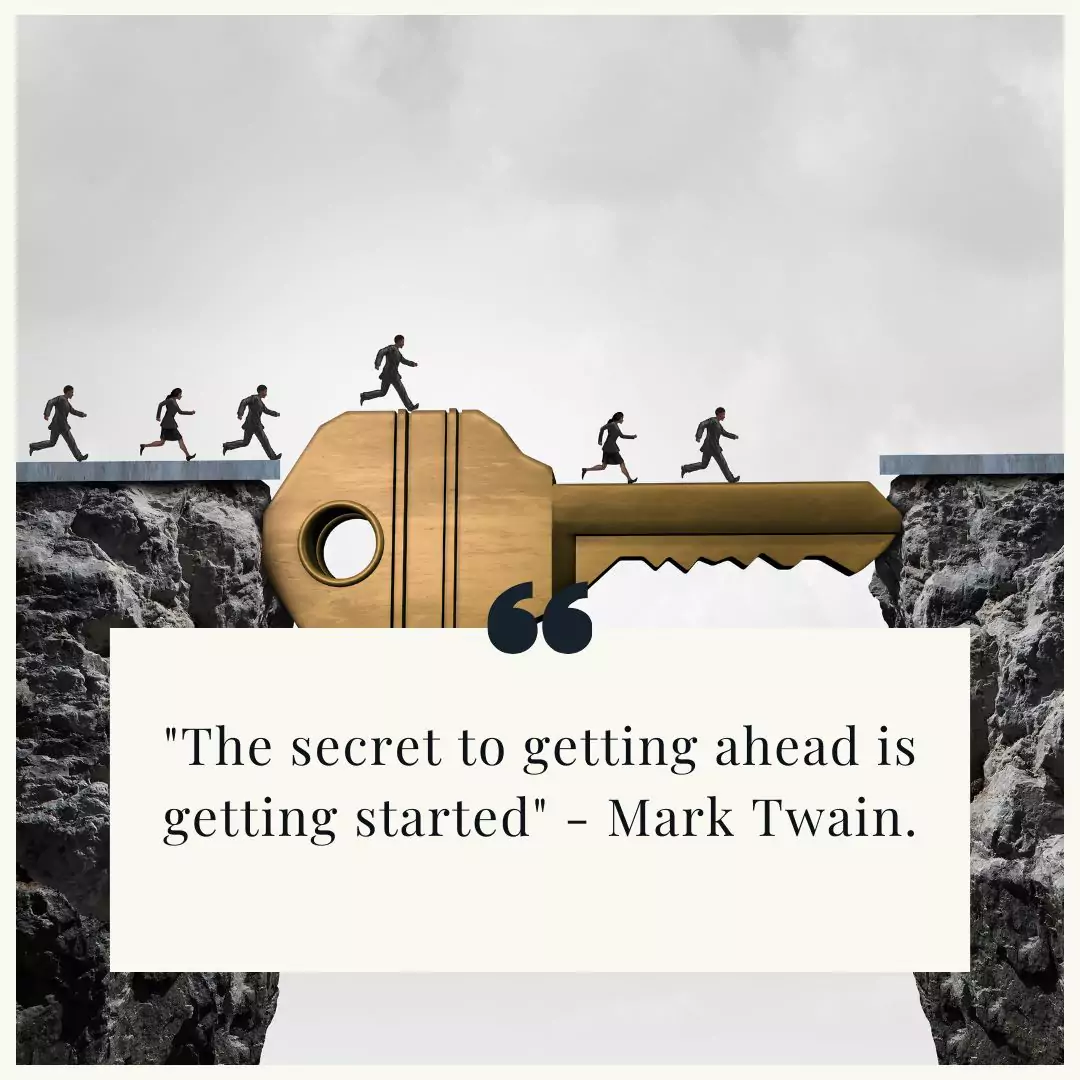
Embarking on the journey of a business venture is akin to setting sail into an unpredictable sea. The intricacies of entrepreneurship create a dynamic landscape where risk and reward intertwine. Allow me to guide you through this labyrinth, offering insights and reflections drawn from my own entrepreneurial journey.
Navigating Uncharted Waters
Business ventures are a tapestry of challenges and opportunities, each thread woven with risk and reward.
The entrepreneurial path demands strategic navigation through an ever-shifting landscape.
A Question to Ponder:
Have you ever pondered the challenges that entrepreneurs face when venturing into uncharted business territories? The answers lie in the delicate dance between risk and reward.
A Personal Voyage
Allow me to share a personal anecdote, a snapshot from my own entrepreneurial expedition. Picture this – the excitement of a new business idea, the thrill of innovation and the daunting realization of the challenges ahead. It’s a journey marked by highs and lows, a testament to the resilience demanded by the entrepreneurial realm.
In my early days, I faced the common challenge of balancing ambition with practicality, dreams with realities. The road was not always smooth, but every bump and detour shaped my understanding of the complex world of business ventures.

The Intricacies of Business Ventures
Embarking on a business venture is akin to setting sail into uncharted waters. The journey is rife with excitement, but the multifaceted nature of entrepreneurship introduces its own set of challenges. Let’s unravel the intricacies and delve into the complexities that entrepreneurs face on this dynamic path.
The Landscape of Market Research
Understanding the market is the cornerstone of any successful business venture. Market research is not a mere formality but a strategic endeavor to comprehend the dynamics of demand, supply and consumer behavior. It involves:
- Consumer Demographics: Identifying the target audience and understanding their demographics.
- Market Trends: Analyzing current market trends and anticipating future shifts.
- Competitor Landscape: Scrutinizing competitors to identify opportunities and gaps.
Real-World Insight: Consider the success of tech giants like Apple, who meticulously study market trends, adapting their product offerings to meet evolving consumer needs.
Navigating the Competitive Terrain
Competition is a constant companion in the business realm. A detailed competition analysis is essential to carve out a unique space in the market. This involves:
- Competitor Strengths and Weaknesses: Identifying what sets competitors apart and where they fall short.
- SWOT Analysis: Evaluating internal strengths and weaknesses alongside external opportunities and threats.
- Unique Selling Proposition (USP): Crafting a compelling USP that distinguishes the venture from competitors.
Real-World Insight: Amazon’s dominance in e-commerce is a testament to effective competition analysis, continually adapting and innovating to outpace rivals.
Feasibility Studies: Balancing Vision and Reality
While the vision propels an entrepreneur forward, feasibility studies ground those aspirations in reality. This involves:
- Financial Feasibility: Assessing the financial viability of the venture.
- Technical Feasibility: Evaluating the technical requirements and capabilities.
- Operational Feasibility: Analyzing if the proposed operations are sustainable.
Real-World Insight: Elon Musk’s SpaceX underwent rigorous feasibility studies, ensuring the technical and financial feasibility of space exploration endeavors.

Navigating Risks with Data-Driven Insights
Exploring the Concept of Risk in Business Ventures
Embarking on a business venture is a courageous leap into the unknown, where risk is an omnipresent companion. To navigate this complex landscape effectively, we must first understand the very nature of risk in entrepreneurship.
- Inherent Uncertainties: Risk in business ventures stems from the inherent uncertainties that accompany any entrepreneurial endeavor. These uncertainties range from market fluctuations and consumer behavior shifts to unforeseen challenges in supply chains.
- Market Dynamics: The dynamic nature of markets introduces an element of unpredictability. Changes in trends, emerging competitors and economic shifts contribute to the risk landscape, requiring entrepreneurs to be vigilant and adaptable.
Integrating Meticulously Researched Data on Industry Specific Risks
In the pursuit of risk mitigation, data emerges as a powerful ally. Meticulously researched data provides a lens through which entrepreneurs can discern patterns, anticipate challenges and make informed decisions.
- Industry-Specific Risk Profiles: Each industry carries its own set of risks. Integrating industry-specific data allows entrepreneurs to construct comprehensive risk profiles. This includes understanding market trends, regulatory landscapes and potential disruptors.
- Competitor Analysis: Data-driven insights extend to competitor analysis. Understanding the strategies and pitfalls of competitors equips entrepreneurs to proactively navigate challenges and capitalize on gaps in the market.
Expert Advice on Risk Management and Mitigation
With a nuanced understanding of the risk terrain and a wealth of data at hand, effective risk management becomes the linchpin of entrepreneurial success. Here, expert advice comes to the forefront, providing actionable strategies for mitigating risks.
- Diversification Strategies: Experts often advocate for diversification as a key risk management strategy. Spreading investments across different areas can help mitigate the impact of a downturn in one sector.
- Continuous Monitoring: The business landscape is ever-evolving. Experts stress the importance of continuous monitoring of industry trends and key performance indicators to identify potential risks in real-time.
- Scenario Planning: Anticipating various scenarios is a hallmark of effective risk management. Experts recommend scenario planning to simulate different outcomes, allowing entrepreneurs to prepare for a range of possibilities.
In the intricate dance between risk and entrepreneurship, the integration of data-driven insights and expert advice emerges as a formidable strategy. By embracing the uncertainties with knowledge and proactive measures, entrepreneurs can not only navigate risks but also uncover hidden opportunities amidst the challenges.

The Art of Decision-Making in Entrepreneurship
Entrepreneurship is an intricate dance of decisions, each step influencing the trajectory of a venture. The art lies not just in making decisions but in making the right decisions that propel a business forward.
The Decision-Making Process Unveiled
In the realm of entrepreneurship, decision-making is a multifaceted process that involves careful consideration and strategic thinking. It’s more than choosing between options, it’s about sculpting the future of a business. Let’s delve into the stages with a closer examination:
- Identification of Choices:
- Begin by identifying the array of choices available.
- Consider both short-term and long-term implications.
- Gathering Relevant Information:
- Collect data and insights related to each choice.
- Prioritize information based on its relevance to the business goals.
3.Assessment of Risks and Benefits:
- Assess the possible advantages and drawbacks linked to each choice.
- Consider the impact on the overall business strategy.
- Decision-Making:
- Make the decision, keeping the long-term vision in mind.
- Align the choice with the mission and values of the venture.
Results-Oriented Approach: Decisions Define Success
Every decision in entrepreneurship is a building block for success. Adopting a results-oriented approach is crucial for ensuring that each decision contributes positively to the venture’s growth.
- Impact on Business Growth:
- Emphasize the direct correlation between decisions and business growth.
- Illustrate how strategic decisions lead to increased market share or revenue.
- Long-Term Vision:
- Stress the importance of aligning decisions with the long-term vision.
- Share examples of successful entrepreneurs whose decisions shaped industries.
- Adaptability and Flexibility:
- Highlight the need for adaptability in decision-making.
- Discuss how successful entrepreneurs adjust strategies based on results.
Practical Tips for Informed and Strategic Decisions
Arming oneself with practical strategies is the key to mastering the art of decision-making in entrepreneurship. Here are actionable tips for entrepreneurs to make informed and strategic choices:
- Data-Driven Decision Making:
- Advocate for a data-driven approach to decision-making.
- Encourage entrepreneurs to leverage analytics and market research.
- Consultation and Collaboration:
- Emphasize the value of seeking advice from mentors or industry experts.
- Discuss the power of collaborative decision-making within a team.
3.Risk Mitigation Strategies:
- Provide practical tips for mitigating risks associated with decisions.
- Discuss how entrepreneurs can anticipate and address potential challenges.
- Continuous Learning:
- Highlight the importance of learning from both successful and unsuccessful decisions.
- Encourage entrepreneurs to view decisions as opportunities for growth.
In the intricate tapestry of entrepreneurship, decisions serve as the threads weaving the story of success. By understanding the decision-making process, embracing a results-oriented mindset and employing practical strategies, entrepreneurs can navigate this art with finesse, ensuring each decision contributes to the flourishing of their venture.

Crafting a Comprehensive Business Strategy
Embarking on a business venture without a well-thought-out strategy is akin to setting sail without a destination. Crafting a comprehensive business strategy is not just a roadmap, it’s the very compass that steers an entrepreneurial ship through the unpredictable seas of the market.
Importance of a Well-Articulated Business Strategy
A robust business strategy is the cornerstone of success in any venture. It provides clarity, direction and a systematic approach to achieving goals. Here’s why a well-articulated business strategy is indispensable:
- Guidance in Decision-Making: A clear strategy acts as a guiding light, aiding entrepreneurs in making informed decisions. It aligns actions with long-term objectives, preventing short-sighted moves.
- Resource Optimization: An effective strategy ensures optimal utilization of resources. It helps allocate time, finances and manpower judiciously, maximizing efficiency.
- Risk Mitigation: A strategic plan anticipates potential challenges and outlines measures to mitigate risks. It’s a proactive shield against the uncertainties that accompany any business endeavor.
- Adaptability to Change: In the dynamic business landscape, change is inevitable. A well-crafted strategy allows for adaptability, enabling businesses to navigate shifts in the market with resilience.
Key Components of a Comprehensive Business Strategy
Crafting a business strategy involves meticulous planning and consideration. The following key components form the building blocks of a comprehensive and effective business plan:
- Clear Mission Statement:
- Define the purpose and values that drive the business.
- Provide a concise and inspiring mission statement that sets the tone for all strategic decisions.
- Market Analysis:
- Perform a comprehensive assessment of the specific market audience.
- Identify opportunities, understand customer needs and analyze competitors to inform strategic direction.
- SWOT Analysis:
- Assess the strengths and weaknesses within your organization while also exploring the external opportunities and threats it faces.
- Use the insights to form a strategy that leverages strengths, addresses weaknesses, seizes opportunities and mitigates threats.
- Defined Target Audience:
- Clearly identify and understand the target audience.
- Tailor products, services and marketing strategies to resonate with the needs and preferences of the intended demographic.
- Competitive Edge:
- Articulate the distinctive selling point (DSP) that distinguishes the business from its rivals.
- Highlight how the business will offer value or solve a problem better than others in the market.
Personal Insights on Crafting an Effective Business Plan
In my entrepreneurial journey, crafting a business strategy has been akin to setting the foundation for a sturdy building. Here are personal insights gathered from experience:
- Flexibility is Key: While a strategy provides direction, it should also allow for flexibility. Flexibility in navigating unforeseen challenges is essential for sustained success.
- Iterate and Refine: A business strategy is not set in stone. Regularly revisit and refine it based on market dynamics, feedback and evolving goals.
- Involve Stakeholders: A comprehensive strategy involves input from key stakeholders. Engage team members, partners and other relevant parties in the planning process for diverse perspectives.
- Keep it Actionable: Each component of the strategy should translate into actionable steps. A well-articulated plan is practical and easy to implement.
Crafting a comprehensive business strategy is a journey in itself, one that requires foresight, adaptability and a keen understanding of the business landscape. It’s not just a document, it’s the entrepreneur’s manifesto for success.

Balancing Risk and Reward
In the dynamic landscape of entrepreneurship, finding equilibrium between risk and reward is the key to sustainable success. Let’s delve into the intricate dance of these two elements, exploring successful risk-taking, unraveling psychological aspects and understanding the concept of calculated risks and potential rewards.
Exploring the Delicate Balance
Navigating the entrepreneurial terrain is akin to tightrope walking, where risk and reward are the balancing poles. It’s not about avoiding risks entirely but about striking a delicate balance that propels the venture forward. Success often hinges on the ability to assess, embrace and manage risks strategically.
Examples of Successful Risk-Taking
Apple’s Leap into the Unknown: When Apple introduced the iPhone, it was a risky move into an uncharted market. The risk paid off, catapulting Apple into unprecedented success.
Amazon’s Expansion: Amazon’s move from an online bookstore to a global e-commerce giant was a calculated risk that redefined the retail landscape.
The Psychological Aspects of Risk and Reward
Understanding the psychology behind risk and reward is pivotal for entrepreneurs. It involves acknowledging the fear associated with risks and the thrill associated with potential rewards. This psychological awareness shapes decision-making and fosters resilience in the face of uncertainties.
Introducing the Concept of Calculated Risks and Potential Rewards:
- Calculated Risks: Entrepreneurship is not about blind leaps but about calculated risks. It involves thorough research, data analysis and a strategic approach to ensure that risks taken are informed and measured.
- Potential Rewards: Every risk holds the promise of rewards. Whether it’s market expansion, product innovation, or strategic partnerships, the potential rewards serve as the driving force for entrepreneurial endeavors.
Maximizing Rewards: Strategies for Success
Embarking on a business venture is not merely about survival, it’s about thriving and reaping the rewards of hard work and innovation. In this section, we unravel specific strategies that pave the way for success, transforming a venture from mere existence to remarkable accomplishment.
- Diversification of Revenue Streams:
- Explore multiple revenue channels to minimize dependence on a single source.
- Case study: Company X increased profitability by diversifying into complementary product lines.
- Customer-Centric Approach:
- Emphasize customer contentment to nurture loyalty and encourage repeat business.
- Success story: Company Y saw a 20% revenue boost through personalized customer engagement.
- Strategic Partnerships and Collaborations:
- Forge alliances with like-minded businesses for mutual benefit.
- Example: Company Z expanded its market reach by partnering with a complementary service provider.
- Innovation as a Driver:
- Constantly innovate products or services to stay ahead of the competition.
- Case study: Company A achieved exponential growth by consistently introducing groundbreaking features.
- Operational Efficiency and Cost Management:
- Streamline operations to enhance efficiency and reduce unnecessary costs.
- Success story: Company B significantly increased profit margins through meticulous cost control measures.
- Employee Engagement and Development:
- Invest in the professional growth of your team to boost productivity.
- Example: Company C witnessed a surge in innovation and performance after implementing a robust employee development program.
- Adapting to Market Trends:
- Keep a finger on the pulse of industry trends and adapt strategies accordingly.
- Case study: Company D capitalized on emerging trends, leading to a substantial market share increase.
- Strategic Marketing and Branding:
- Develop a compelling brand and marketing strategy for enhanced visibility.
- Success story: Company E witnessed a surge in sales after a successful rebranding campaign.
- Financial Prudence and Investment:
- Exercise caution in financial decisions and strategic investments.
- Example: Company F’s well-calculated investments resulted in significant returns during market upswings.
- Focus on Sustainable Practices:
- Embrace sustainability for long-term success and positive brand image.
- Case study: Company G’s commitment to eco-friendly practices attracted a growing base of environmentally conscious customers.
The Role of Innovation in Business Success
In the ever-evolving landscape of business, innovation stands tall as the linchpin for success. It’s not merely about staying afloat, it’s about sailing ahead. In this section, we unravel the profound impact of innovation on mitigating risks and amplifying rewards, shedding light on the importance of foresight and groundbreaking strategies.
Emphasizing Innovation as a Risk Mitigator
- Dynamic Problem Solving: Innovation serves as a dynamic problem-solving tool, allowing businesses to adapt swiftly to unforeseen challenges.
- Adopting a Growth Mindset: Businesses embracing innovation inherently adopt a growth mindset, viewing challenges as opportunities for evolution.
Staying Ahead of Industry Trends
- Anticipating Change: Innovators don’t react, they anticipate. Staying ahead of industry trends means foreseeing change and positioning the business proactively.
- Market Relevance: Trend-setters maintain relevance in the market, capturing the attention of a dynamic consumer base.
Examples of Innovative Business Models and Approaches
- Subscription-Based Models: Companies like Netflix and Spotify revolutionized traditional models, embracing subscription-based approaches that align with evolving consumer preferences.
- E-Commerce Disruption: The rise of companies like Amazon showcases the power of e-commerce disruption, reshaping the retail landscape through innovative platforms.
- Collaborative Economy: Businesses like Uber and Airbnb exemplify the collaborative economy, leveraging technology to create new markets and redefine traditional industries.
Innovation isn’t a mere buzzword, it’s a transformative force shaping the future of business. It’s about more than just products or services, it’s a mindset, a culture that propels ventures toward success. As we navigate the dynamic currents of entrepreneurship, embracing innovation becomes not just a choice but a strategic imperative. It’s the compass that points toward uncharted territories, where risks are mitigated and rewards are magnified through forward-thinking approaches.
Conclusion
In the tapestry of business ventures, the threads of risk and reward weave a narrative rich in insights and lessons. As we draw the curtain on this exploration, let’s distill the essence of our journey.
1. Profound Insights Unveiled
Our expedition unearthed profound insights into the intricate world of business ventures. From the importance of meticulous market research to the art of strategic decision-making, each revelation contributes to the entrepreneur’s arsenal of knowledge.
2. Embracing Rewards Through Effective Navigation
For those who adeptly navigate the tumultuous seas of entrepreneurship, untold rewards await. It’s not merely about avoiding risks, it’s about understanding their contours, embracing calculated risks and steering towards the promise of success.
3. The Call to Action: Applying Knowledge and Taking Calculated Risks
Knowledge, without application, remains dormant. As we conclude, I extend a call to action. Apply the insights garnered in your entrepreneurial journey. Let them be the wind in your sails as you navigate the unpredictable seas of business. Embrace calculated risks with the confidence that informed decisions bring.
Embarking on a New Chapter
The entrepreneurial odyssey is not without its challenges, but within those challenges lie the seeds of unprecedented success. The potential rewards are vast for those who tread with wisdom, resilience and a thirst for innovation. It’s not just a conclusion, it’s an invitation to embark on a new chapter one where risks are met with strategy, challenges are opportunities and rewards are the result of calculated, informed decisions.
As you step into the uncharted territories of your entrepreneurial endeavors, may the insights shared here be your compass and may your journey be marked by calculated risks that pave the way for unparalleled rewards. The horizon awaits navigate it with wisdom, courage and the knowledge that you have the power to shape your own success story.
-Ivan Rangel
- Mar 20, 2024
Native Mexican Animals: Fascinating Wildlife
Fascinating Wildlife of Mexico: Native Mexican AnimalsWelcome to the top notch international of Mexico's natural world! Mexico is a place
- Mar 14, 2024
Safeway Money Order: Best Locations
Find out how easy and safe it's miles to ship cash with Safeway Money Orders. This manual suggests where to
- Mar 08, 2024
The Stock Market Plumbing To
In the complicated world of investing, the stock market plumbing sounds like a strange term. But it is an apt
- Feb 24, 2024
Beyond Finance Legit: Navigating with
Beyond Finance Legit: Unraveling the Legitimacy of Financial Service Providers in Today's Complex Landscape In modern-day complicated monetary panorama, it
- Feb 21, 2024
The Fundamentals of Corporate Finance
Unveiling the Core Tenets: Exploring 'The Fundamentals of Corporate Finance' When we talk about the fundamentals of corporate finance, we're








cialis dapoxetine overnight shipment
January 3, 2024cialis dapoxetine overnight shipment
cialis dapoxetine overnight shipment
World’s 15 Best Paying Jobs In Consumer Services
January 5, 2024[…] candidates typically hold a bachelor’s degree in information technology, computer science, business management, or a related field. Starting in entry-level technical support positions provides […]
Financial Resources: What Are They And How Are They Effectively Handled? - Ivan Rangel
January 22, 2024[…] startups and high-growth businesses, venture capital becomes an attractive option. Private equity investment involves external investors […]
Is Finance Consumer Services a Good Career Path in 2024?
February 7, 2024[…] those contemplating a venture into finance consumer services, the journey is both promising and nuanced. This sector, while […]
20 Best Business Internships for High School Students
February 11, 2024[…] Business internships serve as a training ground for developing crucial skills such as critical thinking, problem-solving, and time management. These skills are not only essential for the business world but also contribute to personal growth. […]
diplom4.me
February 11, 2024Желаете достать диплом без промедления и без заморочек? В Москве имеется немало вариантов приобрести аттестат о высшем образовании – https://diplom4.me/. Профессиональные агентства предлагают помощь по покупке бумаг от различных учебных заведений. Обращайтесь к прочным поставщикам и завершите свой диплом сегодня!